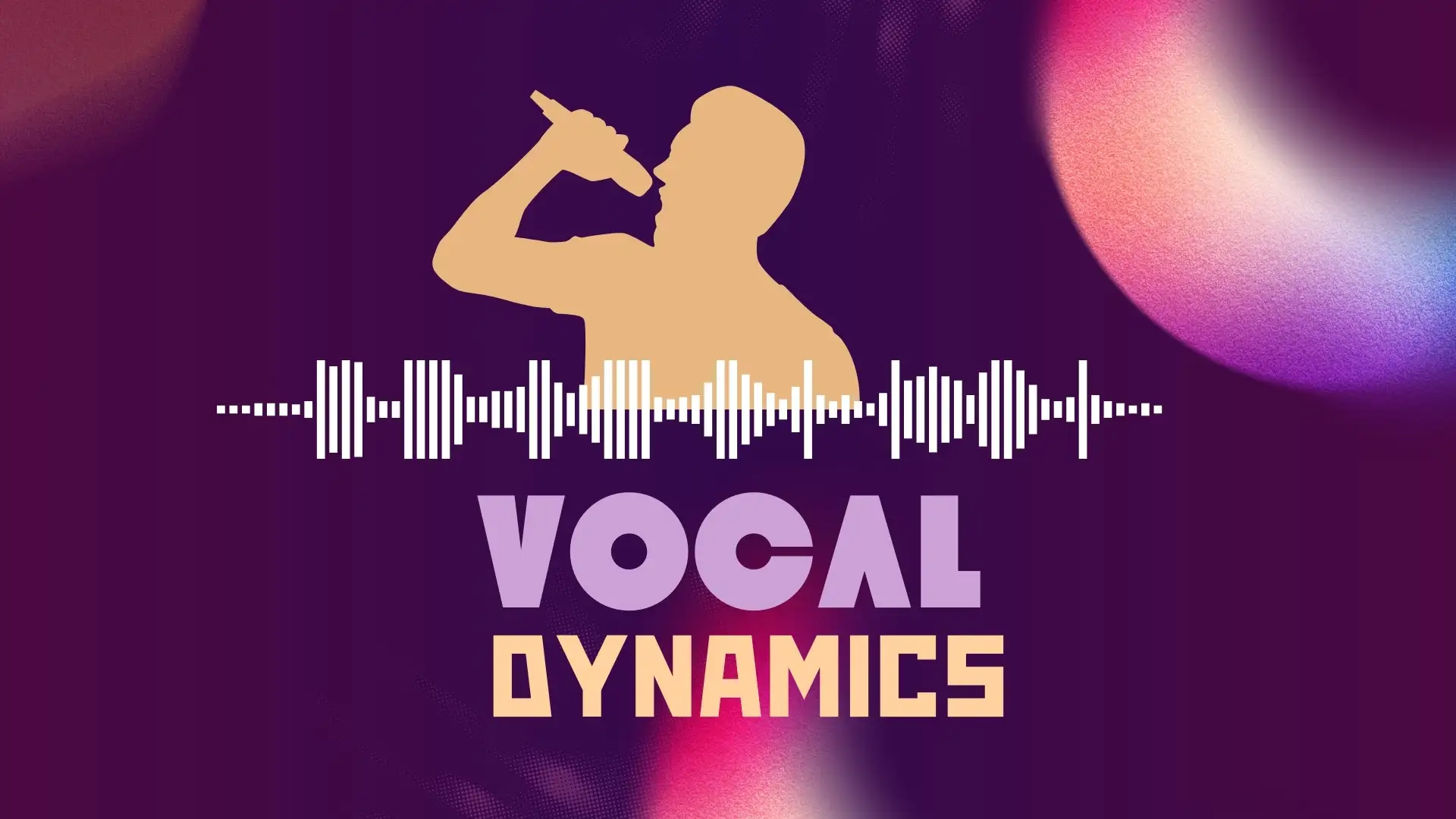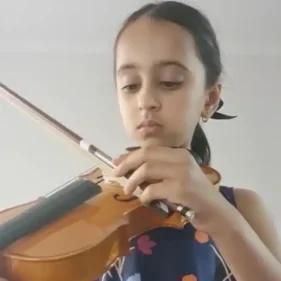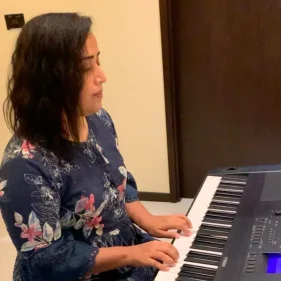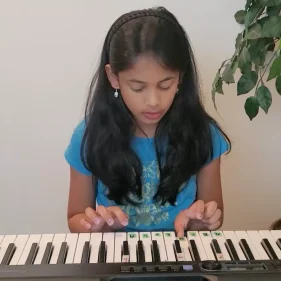Dynamics is simply the study of forces in a movement. Having said that, we all know that there are a ton of movements in a song. Movement of notes, pitches and rhythms.
Singing a song appears to be an easy thing to do! Pronounce clearly, pay attention to the lyrics, sing loudly and connect with the song- seems to be an easy puzzle to crack.
Honestly, it kind of is!
But there are few things to remember to sound extraordinary! And one among the few is vocal dynamics and Vocal expression through dynamics. Singing with dynamics brings 50x beauty to your performance. Professional singers use dynamics to create interest and intensity in their songs.
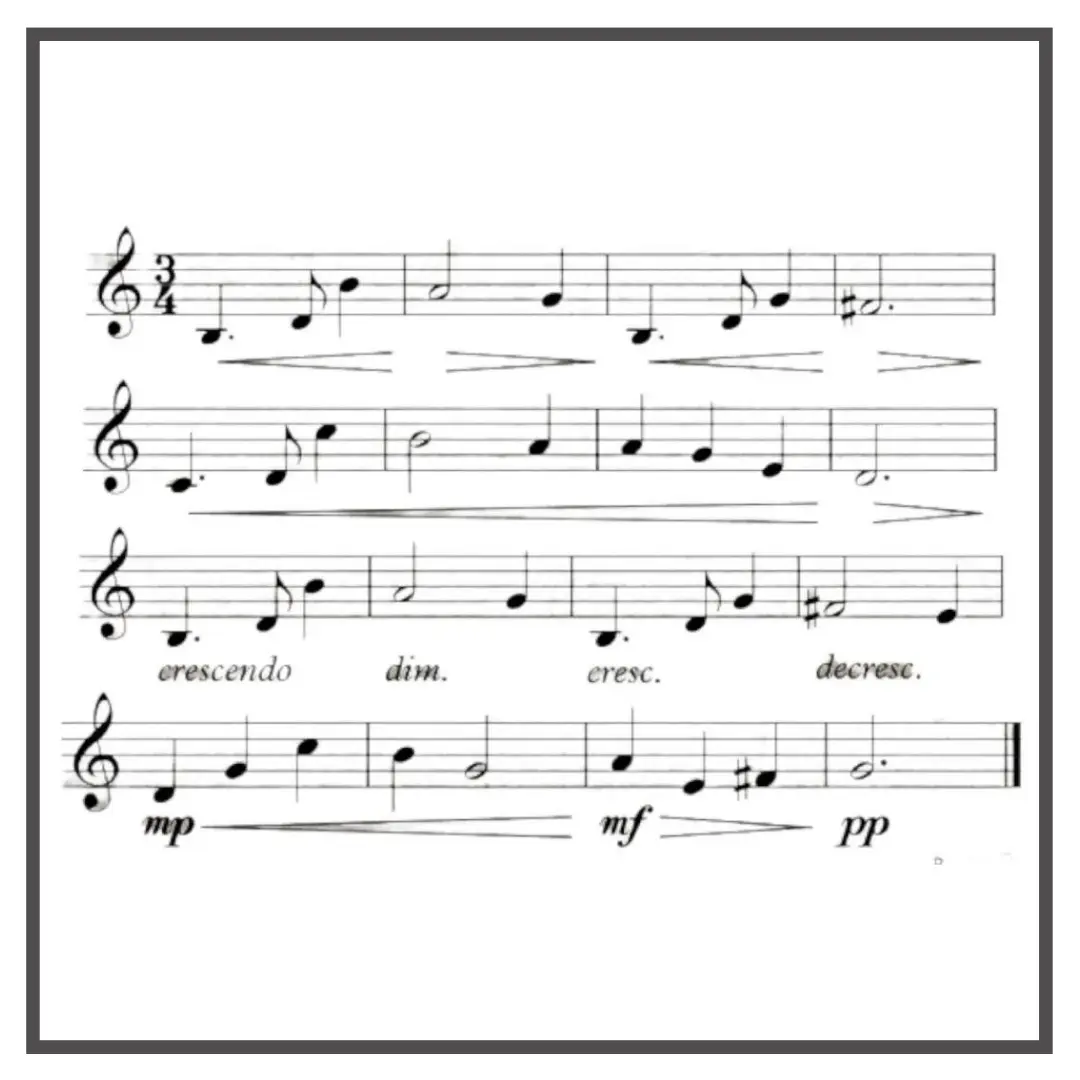
Let’s Dive in!
Dynamics in Music
Dynamics refers to how loud or soft a musical piece is. It’s a shift in volume between notes or phrases in a composition is known as its dynamics. For more detail read Dynamics in Music.
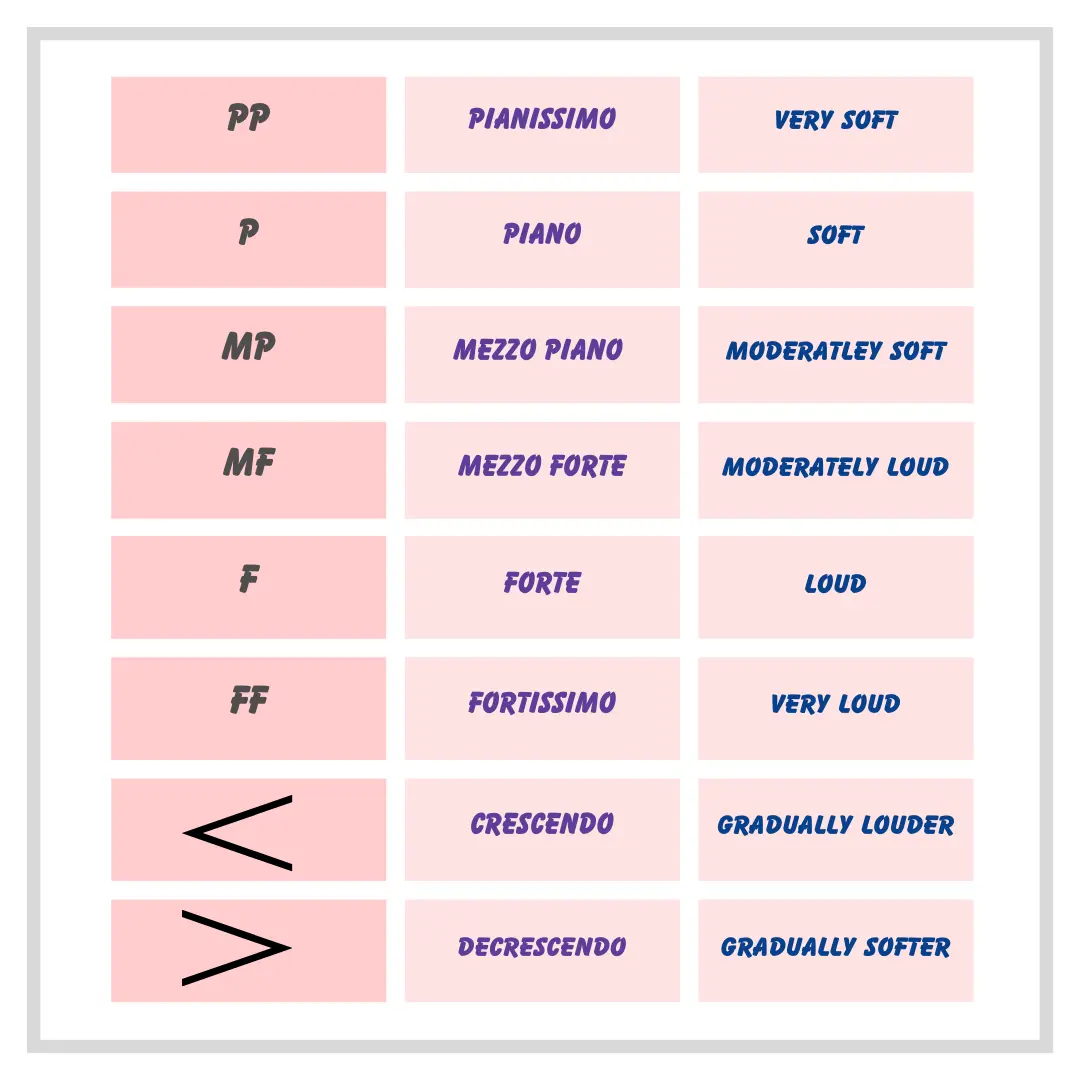
Understanding Vocal Dynamics
Vocal dynamics involves learning to have control of your singing loudness with vowels, phrases, and emotions.
Controlling your singing voice will help you go from being an ordinary singer to an extraordinary one. Understanding your voice allows you to master vocal dynamics and produce a certain amount of volume, and understanding the music allows you to position that volume appropriately.
Singing with intentional dynamics will improve the impact of your performance and help you communicate emotion. Vocal dynamics can be incorporated in a variety of ways, such as through changing the volume, phrasing, and pauses.
By using different dynamics, you may pace your vocals and add interest to your narration while also protecting your vocal instrument from damage.
Vocal Control and Dynamics
I’d say, a vital component of singing is vocal control. Being in control of your voice shapes up your singing pretty well.
Understanding vocal control helps you understand dynamics. Having control over your voice makes controlling the volume of your singing easier. Having control over the volume makes expressing the emotions easier.
Every song has some sort of intensity due to the vocal dynamics. The singers will be able to communicate the sentiments through various dynamic levels. Singers convey vulnerability and tenderness with a softer, more personal tone. Singers use a louder, more aggressive tone to express wrath, emotion, or urgency. Having good control over your voice can make communication look effortless.

Did You Know?
You cannot open your throat to sing loud. You can only relax the constrictor muscles!
How Does Your Voice Work?
Now we all know that the vocal cords produce sound.
In actuality, voice production involves much more than just the vocal cords. The respiratory, phonatory, and resonance systems are the reason for the production of your voice.
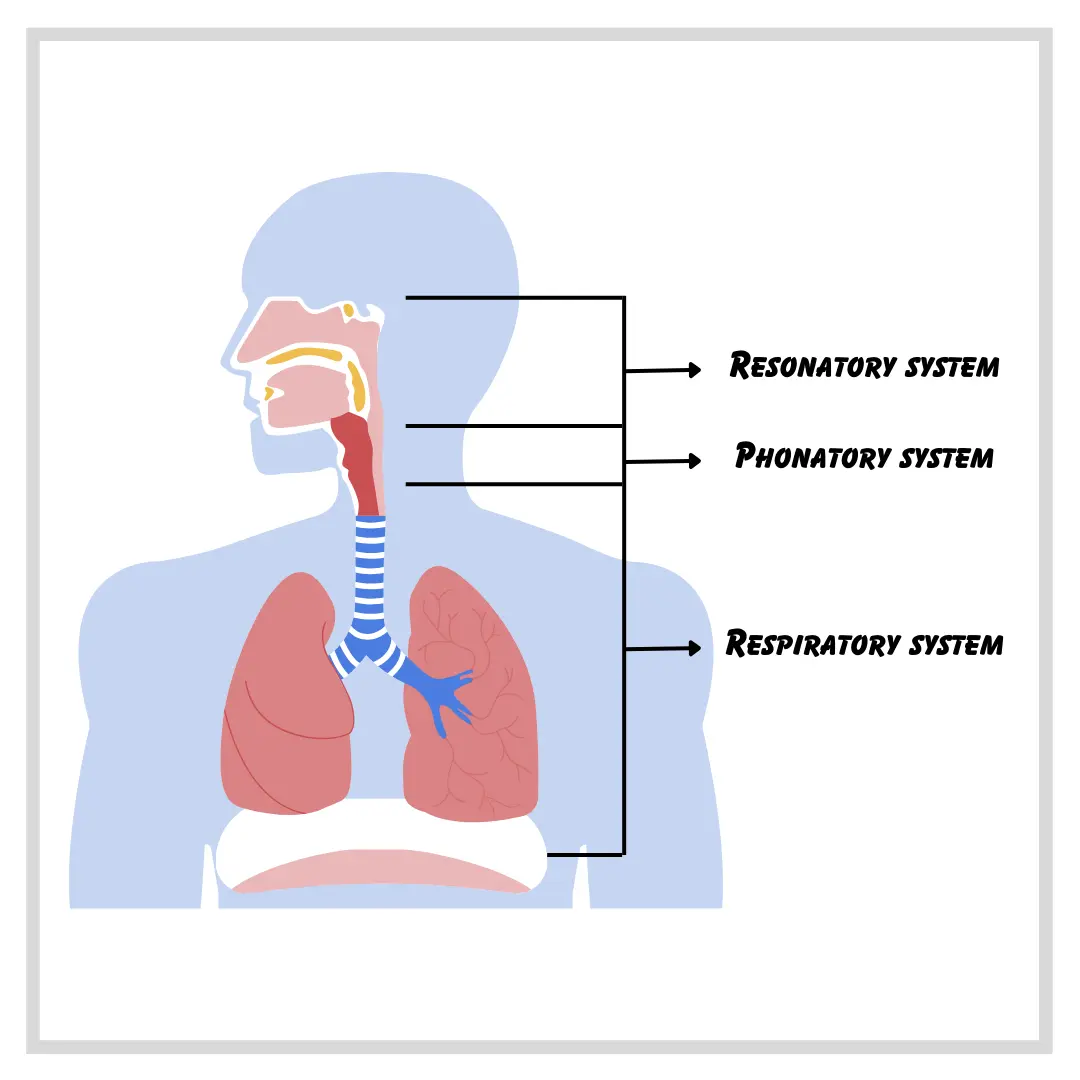
Respiratory System
The respiratory system is the source of breath support. The “fuel” that powers the creation of voice is breath. The vocal folds vibrate due to the airflow that passes through the voice box and up the windpipe, causing the vocal folds to stop vibrating until you become out of breath.
Fascinating, right?
Basically, it is your breath that manages and directs your voice.
Phonatory System
The source of sound is the vibrating of the vocal folds, commonly known as phonation. Within the larynx are two tiny muscles called the vocal folds and are covered in moisture. The vocal folds open during breathing to let air enter your trachea and lungs from your upper airway.
Your vocal folds vibrate (open and close cyclically) when you close them and start to exhale when you want to speak. This pressure increase causes the folds to close. A buzzy sound is produced when the vocal folds vibrate, disrupting the airflow and making it sound nothing like what we hear when we listen to someone sing.
Resonatory System
Resonance transforms the buzzing tone produced by the vocal folds into the sound we recognise as the human voice. The structuring and amplification of the vocal tone’s sound waves is known as resonance.
I agree it’s a bit science-y!
The vocal tract’s length and shape influences your tone’s form. The reflection of the sound waves against the cavities and structures also has hand in shaping your tone
Singing With Dynamics
The word dynamics is derived from the Greek word “Dynamo”, which means “power.”
Slightly using this term in passing might frequently make a singer uptight and strain possibly unconsciously. As a vocal instructor I would always be careful in using the terms dynamics and voice control. I would also want my learner to sing out loud or soft without straining. Mastering Vocal Dynamics can be easy with understanding the following terms and practicing patiently.

Improving Vocal Expression Through Dynamics
Here are three exercises for you to try to understand dynamics.
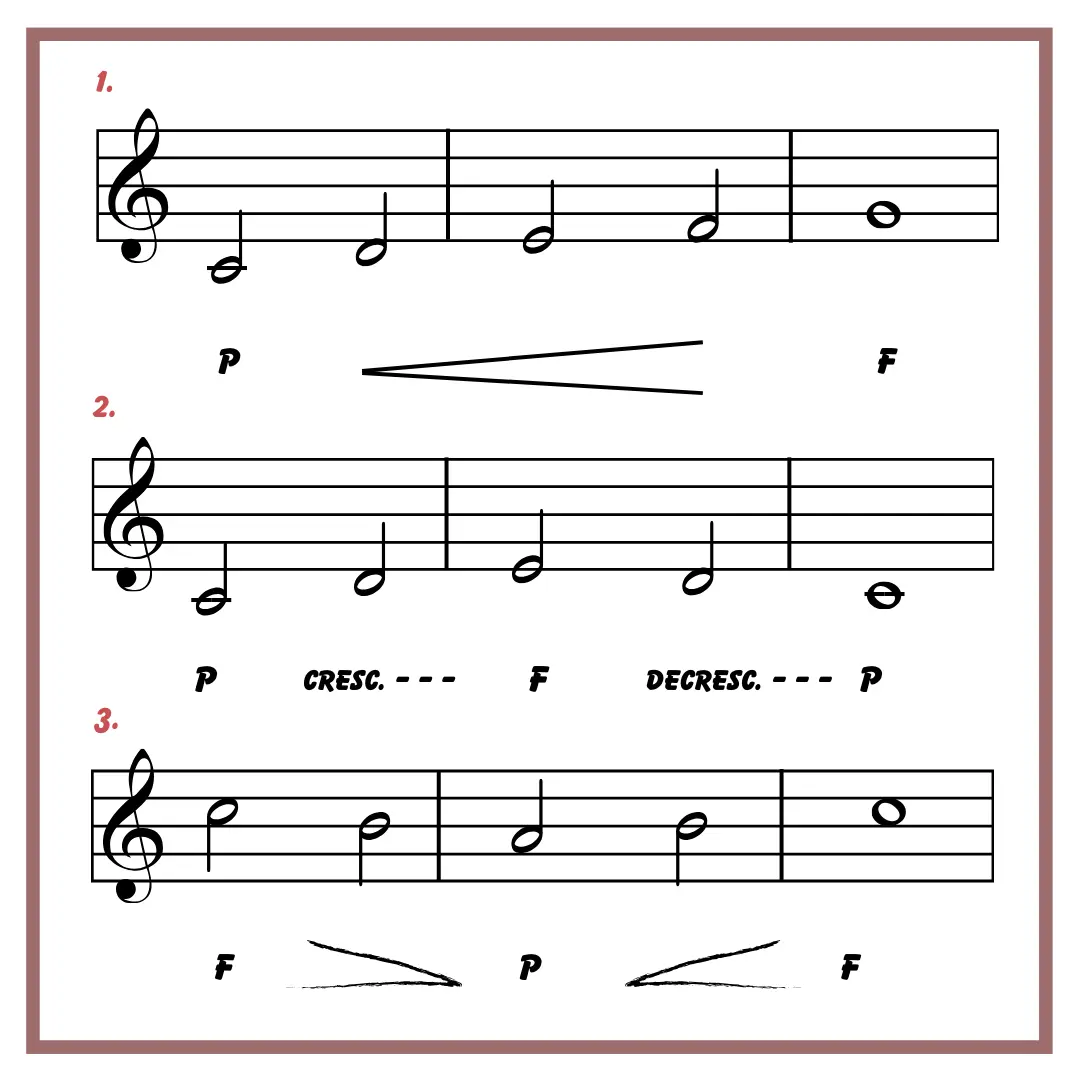
Exercise 1
We will start with singing the first note (C) softly with piano and then gradually increase the volume from the second note (D) with a crescendo until the fourth note (F ). by the time you finish a crescendo you should already be loud. Finish the final note (G) with a Forte (Loud).
Exercise 2
Now the second exercise, start singing the note C with a piano (softly). Now gradually increase the volume from the second note (D) with a crescendo and sing the note F with a Forte (loudly).
Try gradually decreasing the volume with a decrescendo on the note E and finish the phrase with a piano (softly).
Exercise 3
We will start with singing the first note (A) loudly in Forte and then gradually decrease the volume from the second note (G) with a decrescendo and then sing the note F softly in Piano. Try gradually increasing the volume with a crescendo on the note G and finish the phrase in Forte (Loud)
Composers use a quick forte sound or an abrupt decrease to pianissimo are two techniques to arouse emotion and capture the listener’s attention. However, a gradual yet unrelenting crescendo might aid in the development of an incredible finale. Effective use of a decrescendo in music can create the impression of a calmly approaching sleep.
Dynamic indications are sometimes omitted by composers from their works. They might think that would sound better in their minds.
As a singer, I always feel an element of interest or curiosity missing whenever there are no dynamic markings in a piece of music. We are legally allowed to add dynamic markings and make it sound expressive even if the composer doesn’t add them.
There’s no right or wrong way when it comes to song dynamics. Explore a variety of dynamics to find what suits you best. You can always experiment dynamics on your own. You can rest assured that it cannot go wrong. I would advice to a You might discover a different, more enjoyable approach to add dynamics to the song.
Yep, that’s true.
Go ahead and try these exercises too.
Final Remarks
Vocal dynamics could seem like a difficult concept but in general, it is very easy once understood properly. Given how important dynamics are to your singing, I would recommend taking vocal lessons to ease the learning process. Visit our website Musicmaster to enrol today!
FAQs
What are vocal dynamics?
Vocal dynamics involves learning to have control of your singing loudness with vowels, phrases, and emotions.
How to control vocal dynamics?
Vocal dynamics can be controlled through practicing exercises and listening to references online.
What are the importance of vocal dynamics in singing?
Vocal dynamics improves vocal expression and helps you communicate emotion.
What are the types of vocal dynamics?
- forte – f – loud.
- piano – p – soft.
- mezzo-forte – mf – medium loud.
- mezzo-piano – mp – medium soft.
- fortissimo – ff – very loud.
- pianissimo – pp – very soft.
- crescendo – increasing in volume gradually.
- decrescendo – decreasing in volume gradually?
Can vocal dynamics be learned?
Yes, Vocal dynamics can be learned through appropriate lessons.

